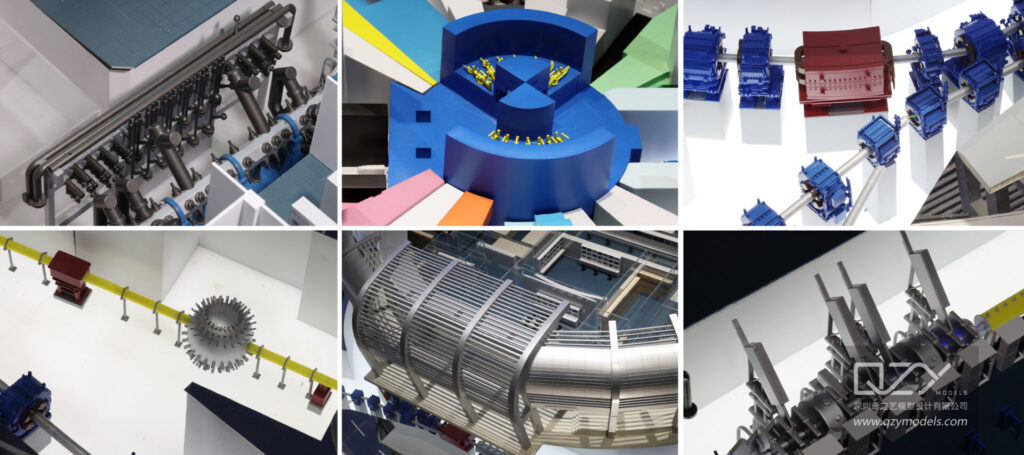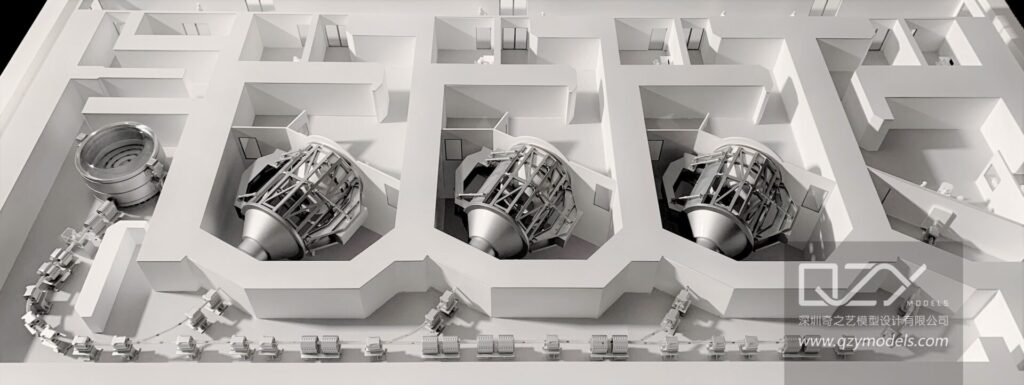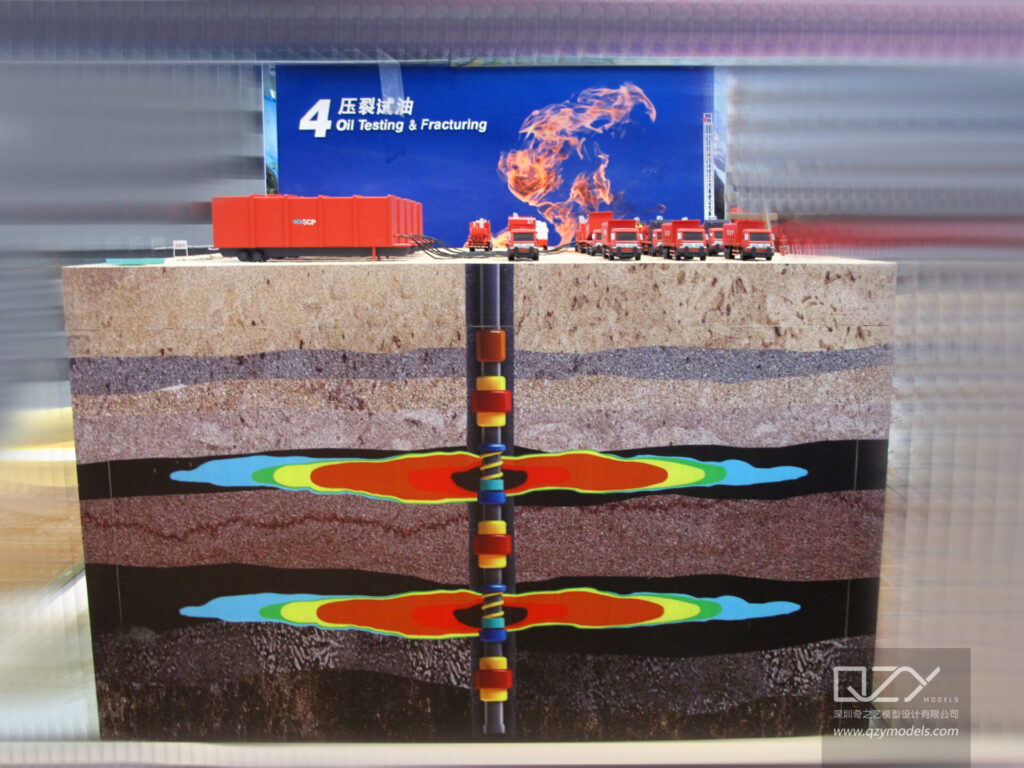Mechanism Models:Unraveling the Beauty of Engineering Precision
Introduction: Mechanism models, often referred to as mechanical models or engineering models, are fascinating three-dimensional representations of various mechanical systems. These meticulously crafted models offer a tangible glimpse into the inner workings of complex mechanisms, serving as powerful tools for education, design, and display purposes. In this comprehensive article, we will delve into the world of mechanism models, exploring their significance, applications, and the artistry behind their creation.

I. Understanding the Essence of Mechanism Models
Mechanism models stand at the intersection of engineering and artistry, encapsulating the fundamental principles of mechanical systems. These models are meticulously designed to demonstrate the movement and interactions of gears, linkages, cams, and other components that make up a particular mechanism. They are created with precision to accurately represent real-world machinery, making them valuable educational tools for students and aspiring engineers.
A. Educational Impact:
Mechanism models are invaluable for educational institutions, providing students with hands-on learning experiences. By interacting with these models, students grasp complex mechanical concepts more effectively, fostering a deeper understanding of engineering principles and mechanical design.
B. Simplifying Complex Mechanisms:
Complex mechanical systems can often be challenging to comprehend through theoretical explanations alone. Mechanism models simplify these complexities by presenting the movement and interactions of gears, pulleys, levers, and other components in a tangible and intuitive manner.
C. Bridging Theory and Application:
The construction and operation of mechanism models bridge the gap between theoretical knowledge and real-world application. Students gain practical insights into how different mechanical components work together to create functional systems.
D. Inspiring Problem-Solving Skills:
As students explore mechanism models, they are encouraged to think critically and solve engineering problems. By troubleshooting and understanding the cause-and-effect relationships within the model, they develop essential problem-solving and analytical skills.
E. Fostering Curiosity and Creativity:
Mechanism models inspire curiosity and creativity among students, encouraging them to explore and experiment with mechanical design. The interactive nature of these models ignites a passion for engineering and drives students to seek innovative solutions.
II. Engineering Precision: Building Mechanism Models
A. Choosing the Right Mechanism:
The process of creating a mechanism model begins with selecting the appropriate mechanism to showcase. This decision depends on the educational objectives, design goals, or display purposes the model intends to fulfill.
B. Meticulous Craftsmanship:
Building mechanism models requires a high level of craftsmanship and attention to detail. Model-makers meticulously construct each component, ensuring the dimensions, proportions, and movements faithfully mimic the real-world mechanism.
C. Interactive Features:
For display purposes, mechanism models often incorporate interactive elements that allow viewers to manually operate the model. These interactive features bring the model to life, enabling a more engaging and hands-on experience for the audience.

III. Mechanism Models for Display Purpose
Mechanism models designed for display purposes hold a unique allure and serve diverse applications beyond education.
A. Showcasing Innovation:
In engineering and manufacturing industries, mechanism models are invaluable for showcasing new and innovative mechanical designs. These models allow designers to visually present their breakthrough concepts, demonstrating the efficiency and effectiveness of their inventions.
B. Enhancing Product Marketing:
In product marketing, mechanism models play a crucial role in highlighting the cutting-edge features of mechanical products. These models provide a clear visualization of a product’s functionality, making it easier for consumers to understand its benefits and advantages.
C. Feasibility Studies and Evaluations:
In research and development, mechanism models facilitate feasibility studies and design evaluations. Engineers use these models to test different iterations of mechanical systems, ensuring optimal performance and safety before moving on to the production phase.
IV. The Artistry of Mechanism Model Making
A. Intricate Detailing:
The artistry of mechanism model-making lies in the intricate detailing of each component. Model-makers meticulously carve, shape, and assemble parts, ensuring that even the tiniest gear tooth or linkage joint is faithfully recreated.
B. Aesthetic Presentation:
Beyond technical precision, mechanism models also emphasize aesthetic presentation. Model-makers use a combination of materials, textures, and finishes to create visually appealing models that capture the essence of the mechanical system.
C. Elegance and Movement:
Mechanism models are designed not only to be visually appealing but also to showcase the elegance of mechanical movement. Model-makers carefully calibrate the model’s mechanics to ensure smooth and captivating motion.
D. Artistic Expression:
Mechanism model-making allows for artistic expression and creativity. Model makers often infuse their designs with personal touches and unique interpretations, making each model a work of art in its own right.
V. Future Applications and Advancements
A. Integration of Digital Technology:
As technology continues to advance, mechanism models are embracing digital technology. Computer simulations and augmented reality are being incorporated to enhance the educational and interactive aspects of these models.
B. Eco-friendly Materials and Techniques:
In line with the growing emphasis on sustainability, model-makers are exploring eco-friendly materials and production techniques for creating mechanism models. This shift toward greener practices aligns with the broader trend of environmental consciousness in various industries.
C. Cross-disciplinary Applications:
Mechanism models are finding applications beyond engineering and industrial fields. They are increasingly used in art installations, interactive exhibits, and museum displays, blurring the lines between engineering and the arts.

Mechanism models play a vital role in unraveling the beauty and complexity of mechanical systems. They serve as bridges between theory and application, igniting curiosity, and inspiring creativity among learners of all ages. Whether used in educational settings, engineering innovation, or artistic displays, mechanism models continue to captivate and educate, offering a tangible glimpse into the fascinating world of engineering and precision. As technology progresses and creativity flourishes, these intricate and mesmerizing models remain a testament to the timeless artistry and precision engineering that enrich our understanding of the mechanical world.
Discovering the World Through Miniatures – About Us
QZY Models, founded in 2013 in Shenzhen, China, is a leading professional team specializing in the design and production of customized physical models. Rooted in the architecture industry, QZY Models caters to diverse model production needs, ranging from furniture, interior design, architectural landscape, to urban planning. Moreover, we are continuously exploring various fields, including dynamic mechanical models, industrial equipment displays, scientific and technological principle displays, and exhibition displays, to create a diverse model service ecosystem.
Since commencing our independent business in 2013 and establishing our base in Shenzhen, ensuring quality has always remained our top priority. We have forged strong collaborations with renowned companies in over ten countries, such as the United Kingdom, the United States, Canada, and Singapore. Our completed projects span across China, the United Arab Emirates, Saudi Arabia, Egypt, Poland, Morocco, Ethiopia, and other countries. Presently, QZY Models has established branches or offices in Egypt, Morocco, Saudi Arabia, Lebanon, Italy, the Netherlands, and other locations, firmly committed to serving global customers.For more information, please visit our official website: www.qzymodels.com
















